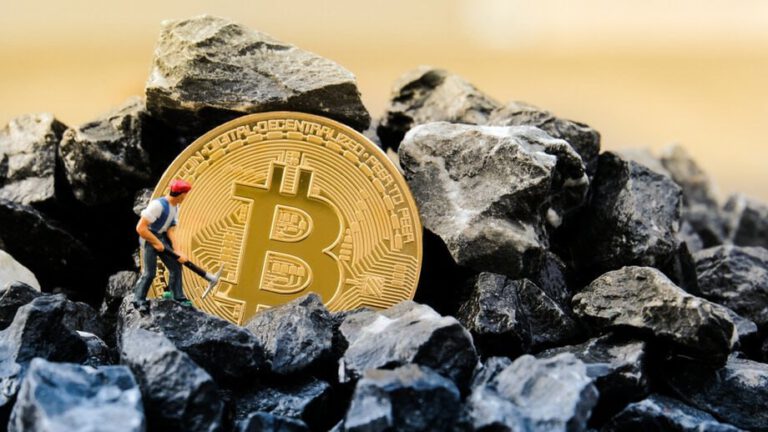The last weekend showed how much can happen in a small blink of the market. Where does it all start? Or what is even a stablecoin in an unstable period? The coin flipped?
First off, I have no intention of portraying myself as someone happy with the shortcomings or downfall of others – not even some “whistleblower” saying “it won’t happen to me.” Keep the question echoing in a small corner of your mind when asked if this happened within 48 hours to leading countries and banks, what could similarly happen?
In my eyes, it all starts with the existing system and traditional banking.
The U.S. dollar lost its peg since we went off the gold standard in 1971. Since then, traditional bankers and government officials have needed a solution similar to that of crypto and Bitcoin. The problem lies with FIAT MONEY, not BTC, USDT or USDC.
As Satoshi expressed the subtle message in the genesis block.
In case you haven’t heard, @SVB “Silicon Valley Bank” is the central bank holding most global startups. The 16th largest bank in America essentially managing most venture capital funds and startups from small to large, has collapsed.
It announced selling $1.8 billion in bonds and raising $1.25 billion to shore up its balance sheet, spooking customers who withdrew some $42 billion amid a plunge in deposits. This was the catalyst for the collapse, and now there is risk to 40,000 clients and over 100,000 employees.
U.S. regulators overseeing SVB’s emergency dissolution are rushing to sell assets and make part of customers’ uninsured deposits available as soon as Monday’s market open. The Federal Reserve is considering creating a fund to backstop deposits if more banks fail. It will hold an emergency meeting on Monday to weigh options.
Silicon Valley Bank’s collapse means the Fed needs to make a decision – either continue raising rates to tame inflation, or stop hiking to save the financial sector. High rates mean fewer or costlier loans. Here, high rates made fundraising challenging and deterred risky bets in the murky environment.
When rates rise, bond prices go up but values fall, asset valuations drop, stock values may fall, and fundraising tied to company value declines. SVB allowed mortgages and loans (mainly) at low fixed rates over long durations (1.6%). Usually banks benefit from rising rates, but niche cases like SVB prove otherwise.
A month ago, Jim Cramer urged investors to buy Silicon Valley Bank’s $SIVB stock. Today, regulators shuttered the bank, making it the second-largest U.S. bank failure ever.
How does this relate to crypto? One of the major crypto-focused lending banks – Silvergate – announced ending operations and winding down days ago after being economically impaired from last winter’s crypto storm.
“In light of recent industry and regulatory developments, Silvergate believes that an orderly wind down of bank operations and a voluntary liquidation of the bank is the best path forward,” Wednesday’s statement read.
Circle, behind the USDC stablecoin, disclosed $3.3 billion exposure at SVB, about 25% of its reserves. “Silicon Valley Bank, a trusted and relied-upon partner for the American innovation economy, is facing a classic bank run similar to those we saw during the 2008 financial crisis. Few traditional banks have the liquidity to withstand such a run.”
Massive selling pressure hit USDC, depegging it to $0.82 Saturday morning. Unfortunately, USDC backs many other stablecoins, causing a broader depeg.
Is this a cascading event? Stablecoins like USDC, DAI, FRAX, USDP and USDD all traded under $0.96, uncoupled from their 1:1 peg (see attached image).
(Image from Hebrw Content of graph page)
Twitter and news outlets issued reassurances the situation would stabilize, but this didn’t work, with major exchanges like Kraken and OKX seeing heavy redemption volumes over the past 24 hours. Most investors are still selling USDC at a discount to the original 1:1 peg.
The situation breeds panic and distrust in stablecoins, with liquidity flowing to Bitcoin. The resulting ripples haven’t fully hit crypto firms yet, but discussion swirls around the banking system and potential next scenarios.
The question arises: what other banks could face strain as their net interest income shrank or profits grew only modestly?
Here are the 10 banks that saw the biggest profit contractions or smallest expansions over the past year:
Customers Bancorp
First Republic Bank
Sandy Spring Bancorp
New York Community Bancorp
First Foundation
Ally Financial
Dime Community Bancshares
Pacific Premier Bancorp
Prosperity Bancshares
Columbia Financial
Many like to seek parallels to events like 2008, but unfortunately its scale and the technological enablement of blockchain and Bitcoin as a deflationary, appreciating store of value gaining human awareness can’t be compared. 1BTC=1BTC.
In days when currency flips and becomes less stable, and as central bank digital currency (CBDC) development takes the spotlight, these events seem linked, with CBDCs potentially being framed as the “safe haven” or risk-free alternative.
Sources:
https://www.circle.com/blog/an-update-on-usdc-and-silicon-valley-bank
https://twitter.com/WatcherGuru/status/1634246217226919937
https://www.reuters.com/article/idUSL4N35J068
Image: https://foreignpolicy.com/2021/10/12/future-of-money-cbdc-digital-currency-dlt-libra-diem-tether-stablecoins-finance-regulation/



















